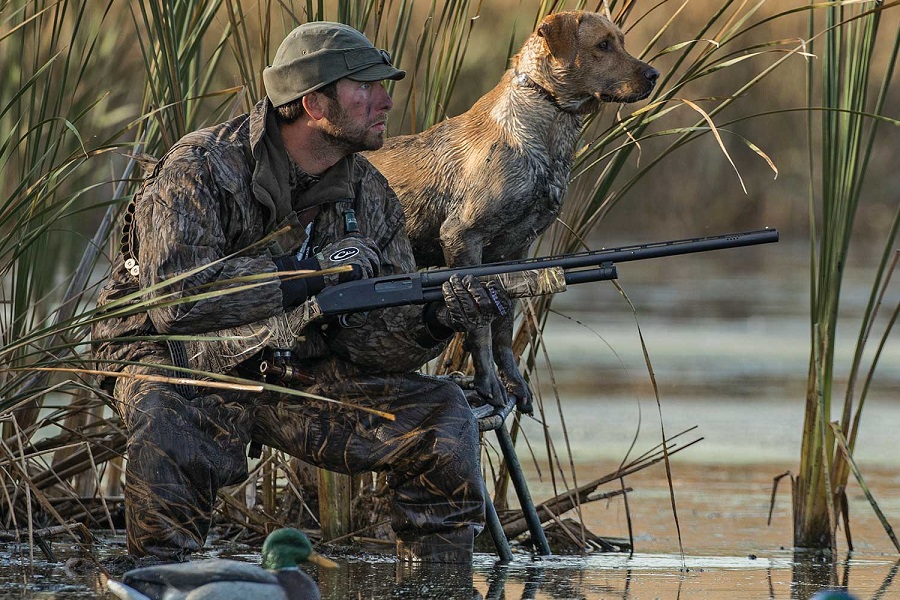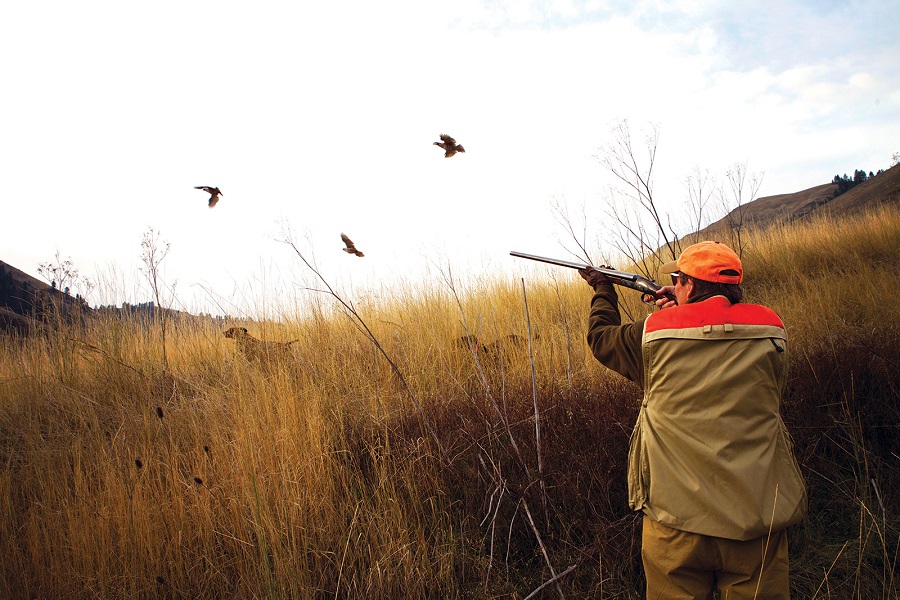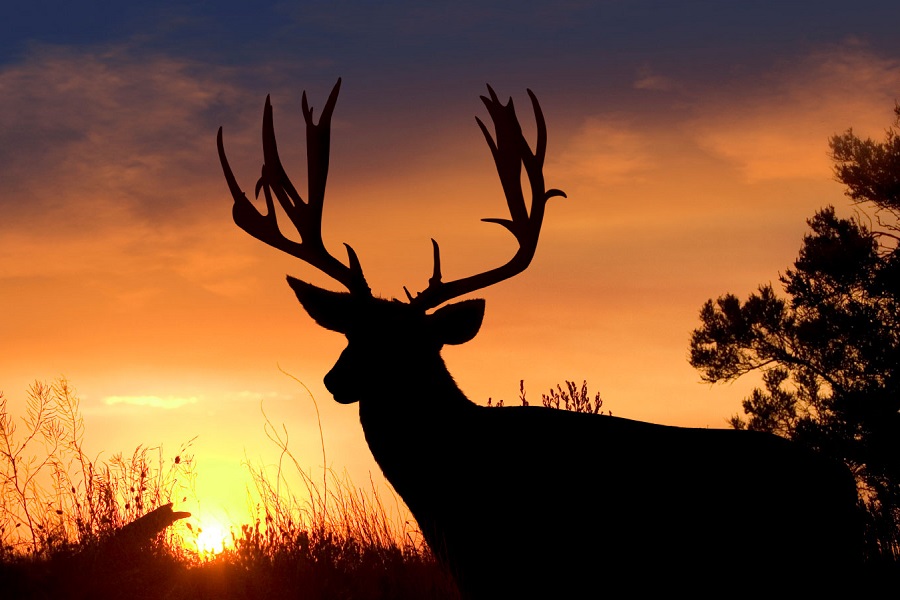They may say that clothes don’t make the man, but hunting gear definitely makes the hunter (along with skill, of course). Quality gear with multifaceted uses makes all the difference out in the wild and can offer excellent aid when you need it most, as well as cleaner, quicker kills on your prey.
Hitting the hunting spot with the wrong gear is practically pointless. It’s like going into a bowling alley with no bowling ball—what are you going to do? You’re going to stand around awkwardly, not achieve anything, and then go home.
Don’t be caught naked without the right gear. This is a list of all the essential hunting gear you will come across, accounting for different types of hunting and hunters, of course.
Let us go through this guide to hunting gear for the best hunting experience.
Hunting Gear To Grab
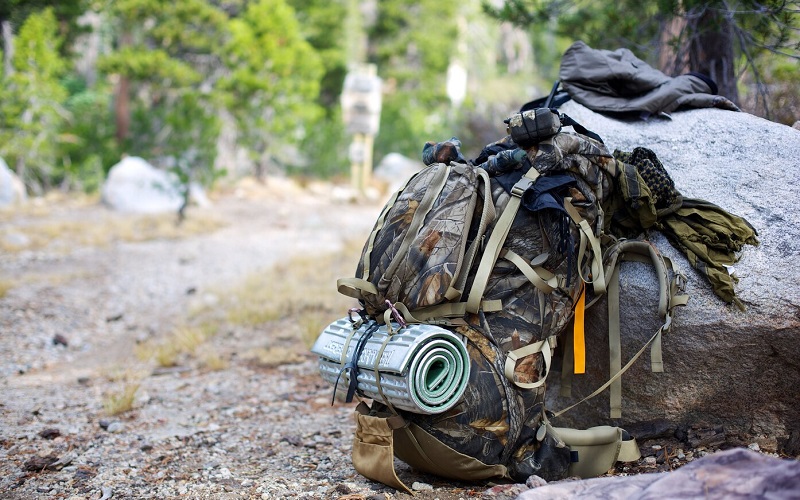
This is pretty universal stuff that every hunter will need at one point or another.
It includes basic gear choices, talks about why they’re important, and helps you figure out just what type of hunter you are so you know what variations of which gear to get.
Hunting Backpack
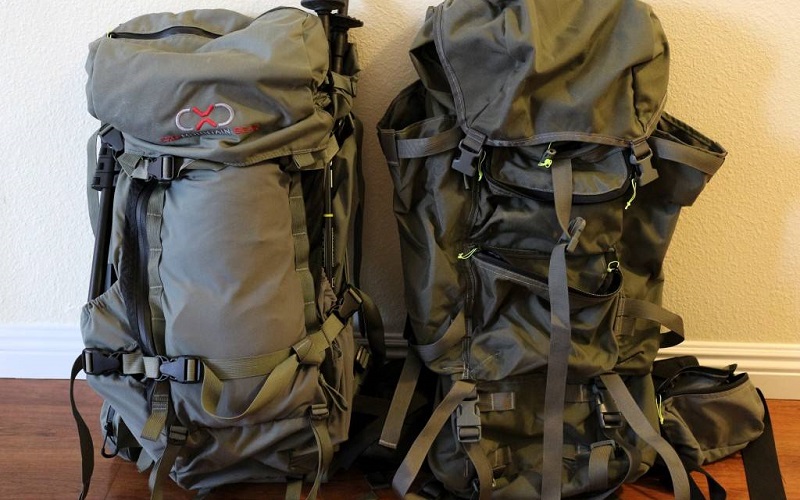
Hunting backpacks do more than just store your goods while you’re heading out of the house—they’re supposed to help you hold onto everything in a convenient and reachable manner. You don’t want to drop your backpack in the middle of nowhere just to go through it, do you?
Of course, you don’t. Instead, get a hunting backpack with all the necessary compartments for ammunition cases, additional hand warmers, gloves, and whatever else you need.
Your hunting backpack also works to support your lower lumbar region and reduce tension in your back. You’re going to have it on for extended periods of time, so it might as well be comfortable, right? With suspension frames, also known as external frames, you’re taking the load off your shoulders and suspending it.
It’s important to use all the chest straps with a hunting backpack; otherwise, that external frame won’t have any way to stay suspended.
A hunting backpack is your prerequisite item; without it, you’re basically lost. Storage is important, and being a mobile fortress while chasing down games is exactly what you need. Most hunting backpacks are also designed for load hauling, so you can actually take your spoils back with you when you leave.
Ammunition Case

Loose bullets are never a good thing. While it would take a lot for stray bullets to pop off or create any type of issue for you, you still don’t want them rolling around.
Ammunition cases are different from ammunition boxes because they’re designed to be moved around and jostled in small spaces like the main compartment of a backpack.
You could also go for an ammunition box if you want, but you’re going to be bringing it with you separately—it won’t fit in your hunting backpack. If your tree stand has enough room, you can bring an ammo box up and have it sit quite nicely without bumping into any of your other gear.
Ammunition cases are smaller than boxes, but either way, one will be required to carry additional ammunition.
Hunting Knife
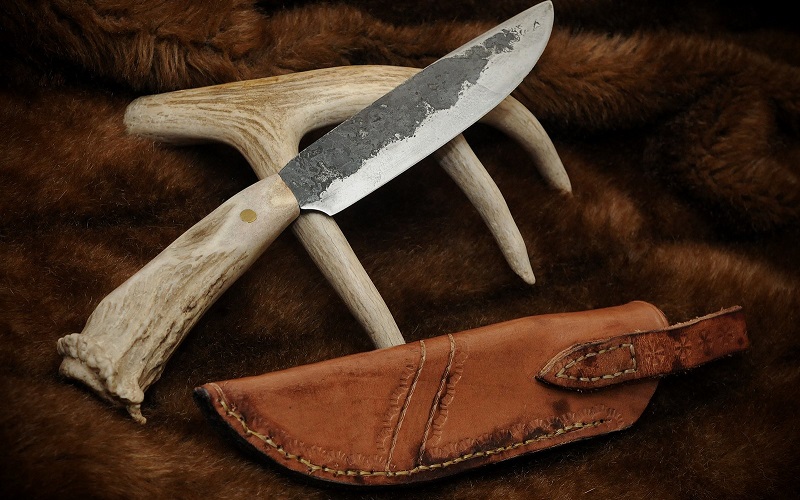
If you’re not a knife enthusiast, you are about to become one. Just search through any knife-centric forum, and the amount of information will be mind-boggling.
From sharpness to chromium content on stainless steel blades, grits of sanding blocks versus whetstone sharpening, custom construction to concealment, and length laws in different municipalities, you could spend all day reading about knives.
Hunting knives are not only used to clean game when you’re on more than a one-day trip (you have to eat), but they’re also used to cut rope, serve as a multitool, and serve other functions as well.
It’s critical to inspect the laws in the state you live in, the state you will be hunting in, and all the states along the way (if you’re driving for your trip) to ensure compliance with every law.
It’s a slim chance, but if you get pulled over in a middle-sized state on the way to your destination, you don’t want to have an illegal-sized knife on board.
Proper Rainwear

Your immune system is compromised by a tonne of different things that you do when camping.
The most compromising thing for your immune system is cold weather, and the rain will usually cool everything down between the cloudy weather and lowered temperatures, which increases your likelihood of getting sick.
You want to return from a hunting trip with fresh game and dinner on the table, not an illness.
Rainwear is important because it keeps moisture out of your clothes, and in some cases, it will also help to insulate you. Your underlayers will provide the warmth, but these will act as shields that don’t conduct heat or cold, so you can stay warm without worrying.
Rain gear comes in the form of hoods, jackets, full waders, covers for your backpacks and guns, and rain boots. If you keep reading, we’ll talk about what you need in a proper boot when you go hunting.
Orange clothing (State-Regulated)
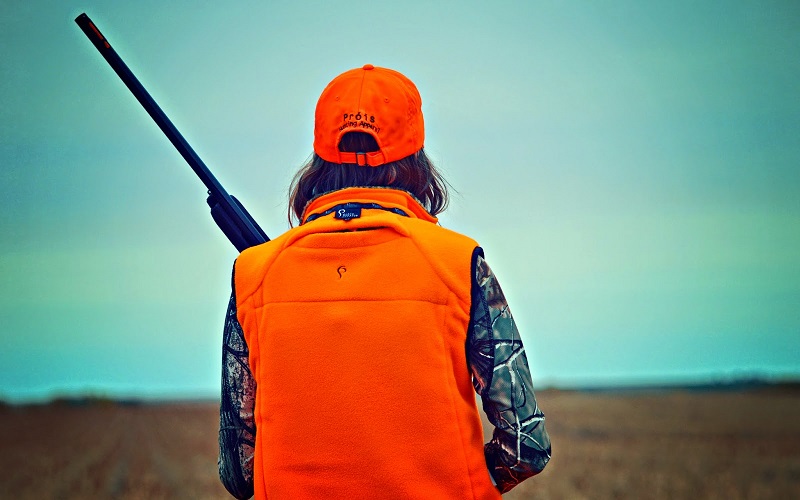
The International Hunter Education Association, or IHEA, has strict guidelines in the United States and Canada regarding hunter orange. It’s something that you can actually be fined for if you don’t comply because it’s designed to prevent injuries and hunting accidents from occurring.
Every single state will have different regulations. For example, Alaska has absolutely no regulations, but Alabama requires you to have at least 144 square inches of reflective, visible hunter-orange on your clothing.
You can learn more about each state here. When you buy hunting jackets and gear, you’ll be met with different IHEA regulations in the marketing material on the sales pages.
If possible, it’s best to go with something that meets your home state’s regulations and those of the area that you usually hunt in if you like to travel for your hunting trips.
This ensures that you won’t have to buy multiple jackets for hunting since they’re often seen as an investment and can last for a decade or longer.
Tree Stand
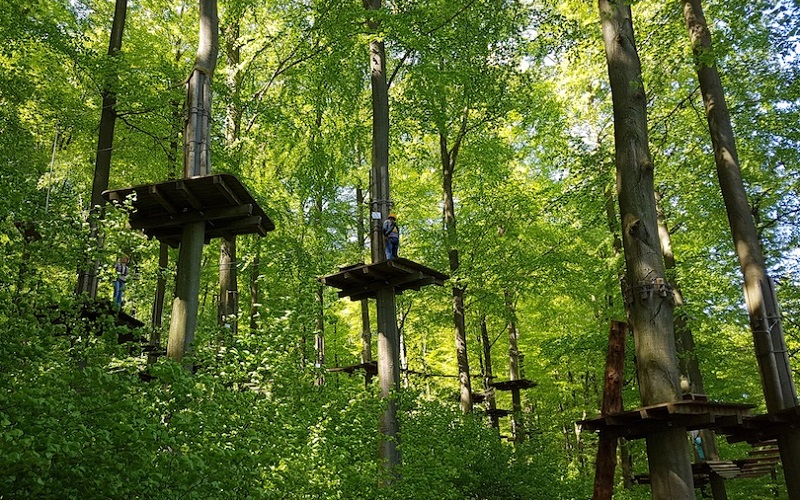
Tree stands are basically your best friend. If you’re hunting for whitetail deer in the United States, a tree stand is the ying to your yang.
There’s a lot of information that goes into them, such as positioning, finding the right tree, having the capacity to fit around that tree, and climbing up to set the thing up in the first place.
It gets pretty technical, especially since you could be sitting in them for four to ten hours on your hunting trip.
When it comes to buying them, that’s another story entirely. There’s comfort, leg room, storage, and materials to consider.
It gets pretty complicated, but it’s also vastly rewarding. A deer’s ability to smell is horizontal, so it can’t detect your scent or really make out your shape if you’re up in a tree.
It’s not just recommended for deer hunting, it’s absolutely paramount to a successful deer hunt.
Scent-Reduction Clothing

On the subject of scent, it’s really quite remarkable just how much different types of animals can smell. Bears can smell for twenty miles, and dogs can smell something forty miles underground. It gets pretty intense.
For your own protection, you need to mask your natural musk, because if you don’t, you’ll be repelling potential game from coming anywhere near you.
There are two ways to do it: use animal urine to mask your scent or use scent-reduction clothing. You should actually combine the two, but not everyone can bring themselves to douse themselves in animal urine to stay undetectable.
You have to give yourself a fighting chance, so scent-reduction clothing it is.
Hand Warmers

It gets mighty frigid out there, especially when you don’t expect it. You don’t have to go hunting in the winter to feel the cold snap creep across your knuckles.
Nightfall in the city is different from nightfall in the woods: asphalt roads actually retain sunlight heat throughout the day and release it slowly overnight, making cities warmer than the woodlands.
It could be the dead center of summer, but it can still be chilly and make everything a little difficult.
Hand warmers are a lifesaver. They’ve been around since the 20s (which most people don’t believe) and can be used to insulate your body underneath a full wader as well as just your pockets.
Retaining a good body temperature is so important when you’re far away from your campsite or vehicle when you’re just in the woods with nothing but nature around you. Keep a half-dozen of these handy, and you’ll be able to stay warm.
Game Calls
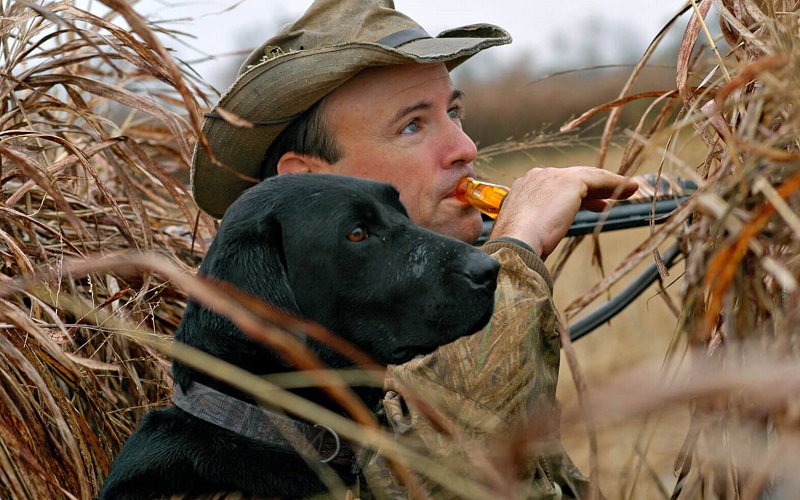
Many people think that these are just for duck hunters, but there are actually a tonne of different game calls for other animals, including elk, geese, moose, raccoons, pigs, coyotes, and more.
Game calls are one of the cheapest things you can bring with you on your hunting trip and could make a world of difference.
There’s not much more to them than that, but they don’t take up much space, so it can’t hurt to bring one along for the ride.
Hunting Binoculars
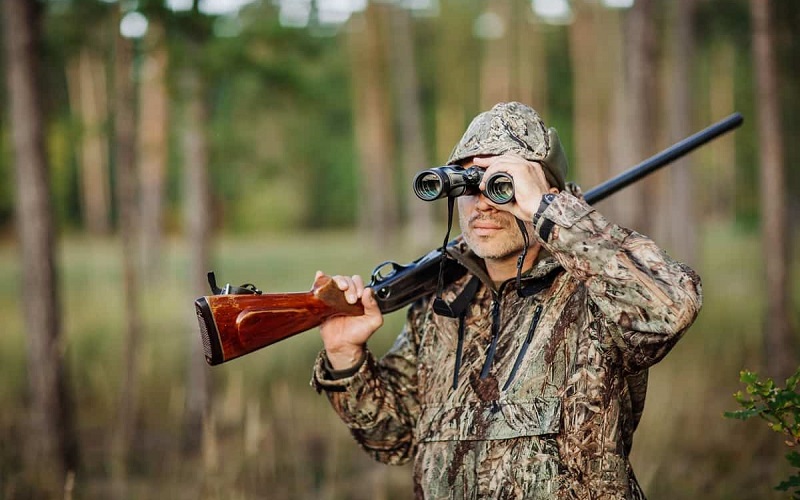
These aren’t your standard binoculars that you can just grab at the store. They’re fitted for maximum magnification, up to 20x zoom, and usually come in a small, compact size.
If you were getting a pair for bird watching, well, that’s not something that you have to be too far away from your normal life to do.
If you go into the woods for bird watching, you don’t have to pack the same things that you would for a hunting trip. They’re just made differently.
Hunting binoculars are used to scan for prey, so there needs to be a higher-caliber prism in the interior. Standard binoculars cut out at a certain amount of focus (different than zoom), so when you look at something far enough away, it can appear blurry or dark.
On top of that, you’ll be using them for extended periods of time. The eye cups can get irritating after a short time, which is why it’s best to
Hunting Boots
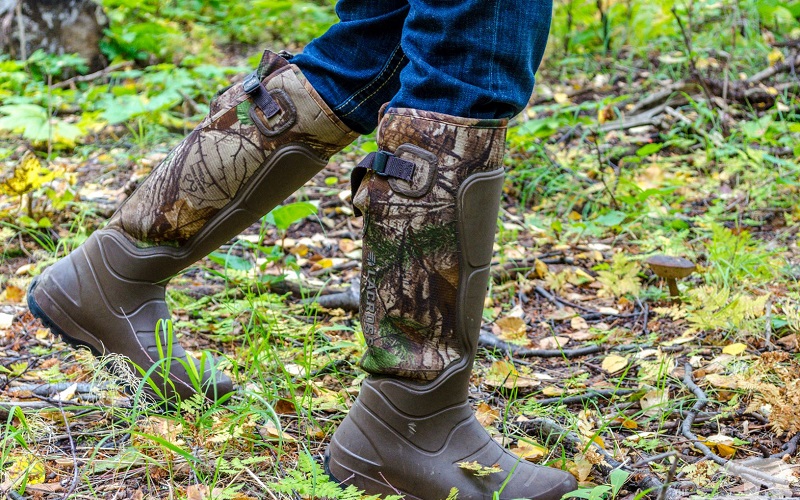
We’ve covered an entire guide on the difference between hunting boots and hiking boots and what makes them stand out for specific hunting tasks.
They insulate, provide specific traction assistance for the forest floor (not the best on concrete, but you can’t have everything), and are fully adjustable.
You can tie them off so they go in line with your rain gear or hunting pants, where you can slip the drawstring into the cuff and such.
Hunting boots usually have an ultra-padded tongue and enough cushioning and support to help you out with pain management from walking around for 10–12 hours a day. There are different seasons for hunting boots, so you might end up with a few pairs in order to cover everything.
They’re measured in grams of insulation to determine if they’re early season (200–400 grams), midseason (400–800 grams), or late season (usually 1,000+). You don’t want to over-insulate for moderate weather or under-insulate for the harsh winter months.
Then you have to factor in your hunting style. Are you tracking all day, or are you up in a tree stand? You need more cushioning and a strong insole if you’ll be walking around all day, but for sedentary boots, it just has to be comfortable and not too constricting.
Trail Camera
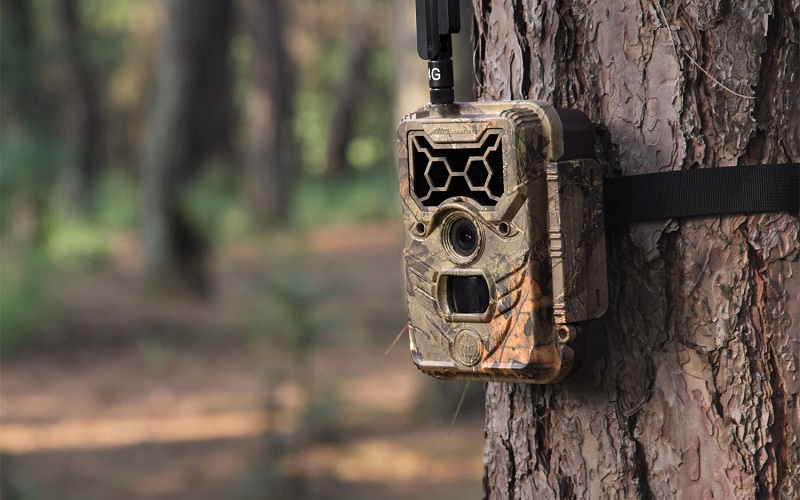
You’ve already passed by this point, but you feel like an animal is going to cross it at any point. Unless you’re tree-stand hunting some whitetail deer, you aren’t going to sit in one place forever.
You need trail cameras. There are quintessential items for anyone planning a weekend-long hunting trip with a bit of camping involved.
Set these up on the trees, lean back, and wait for notifications to roll in. Trail cameras range in power and capability, so sometimes they will just need to be collected and reviewed later so you know the normal patterns of some of the local wildlife.
Other times, it can tell you when an animal crosses in front of it, so you can grab your gun or your crossbow and head out.
It does this through motion-activated photo capture. You can imagine that hanging a camera on a tree and walking away isn’t good for battery life, and you’d be right.
Instead, these sit in idle mode and only activate when something passes in front of them, just like an outdoor motion-activated light at your home.
Trail cameras come with a lot of specifications, from viewing angles and battery life to durability and detection range. There’s a lot to it, but fortunately for you, we’ve got an entirely separate guide on them.
Head Lamp
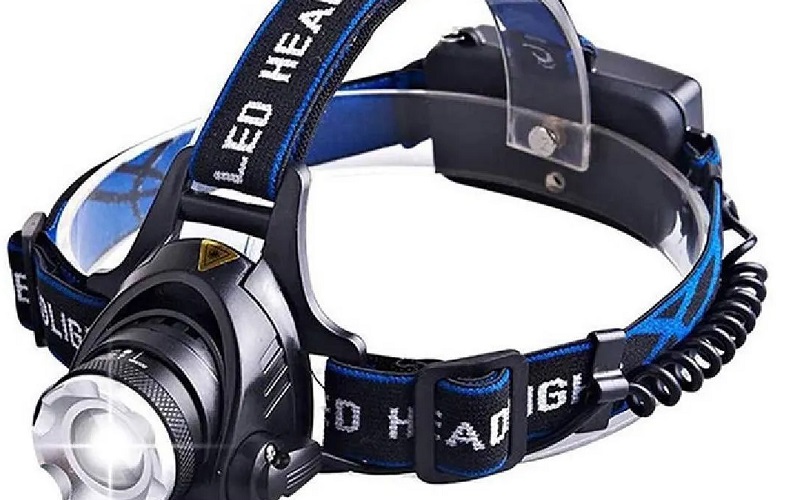
Nature is glorious, but it’s also inconsistent, which is where its beauty comes from. You like to hunt down tracks and find where animals have recently been, but you can’t always see the forest floor.
The treetop canopies and dense underbrush make it difficult, which is why a headlamp would be perfect to flick on and off when you’re trying to keep your eyes on a series of tracks. They’re also good for overnight camping, which we’ll get into in a little while.
Quality Gloves
There are two types of hunting gloves. First, you can have multipurpose gloves that help alleviate irritation and abrasions from using your gun, setting up camp, maneuvering around tree stands, and things of the sort.
Sore hands can be distracting and slightly hindering, so a good pair of quality gloves will be there to help you out.
Then there are field latex gloves for cleaning the game or field dressing it. You don’t know what kind of bacteria is present in the flesh of an animal; hence, we have a proper cooking temperature range to kill any of those bacteria before eating.
A little snag on your finger, a cut from messing with the fishing line at breakfast, or catching it in the tent zipper are all entry points for bacteria to start infecting your body. It’s a lot easier than you think to get infected while hunting. Gloves act as protection on multiple fronts.
Spare Clothes
It’s going to get sweaty, and that deer urine that you used to mask your scent isn’t going to age well. You need spare clothes, especially if you’re headed back to the lodge or a nearby hotel at the base of the mountain.
Bring them with you and switch out of them just before you make it back to civilization to avoid horrendous odors and keep yourself clean. When you’re sweating for eight to ten hours a day, you run the risk of clogging your pores with sweat and dirt.
A quick change of clothes, even though you won’t be hitting the shower for a couple of hours, can make a world of difference. It’s going to soak up residual sweat and dirt, keeping it from resting in your pores and creating pus.
Apart from all that, it’s just nice to be in something fresh when you finally take the backpack off, you know?
Overnight Hunting Gear
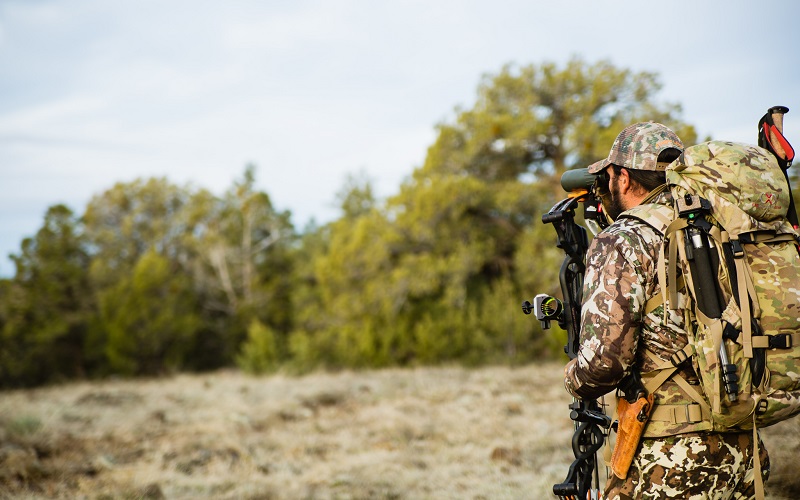
You’re making a whole weekend out of it, not just a one-day venture. That’s excellent, and it’s going to be a relaxing time for you, so let’s get you outfitted with everything that you’re going to need.
Water Purification System
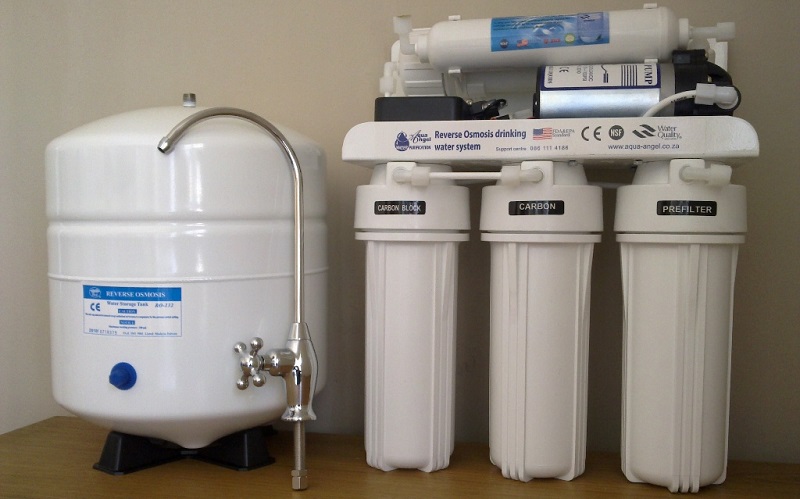
Are you bringing 1-2 gallons of water with you on the hunting trip, per person, per day? It’d be pretty horrible to carry those into the woods, but it’s what you need in a day to stay hydrated and focused out there. On average, an adult male needs a half gallon of water every single day, even in a sedentary position.
Add in the stress and sweat of being loaded up with tonnes of gear and heavy clothes and then walking around outside for eight to ten hours. You’re going to get thirsty.
Dehydration is all too often something that hunters come home with. It’s simple to avoid. Bring a half-gallon water jug with you and drink it on your way to the hunting grounds. Find a water source, and use your water purification system of choice to clean the water and put it into the jug to fill it up.
Gravity-fed systems take a little while to set up but can produce a gallon of clean, drinkable water in about thirty seconds. There are personal water filtration systems, such as the LifeStraw, but those need to be used directly with the water source to get any results.
Ground Pad Or Sleeping Bag
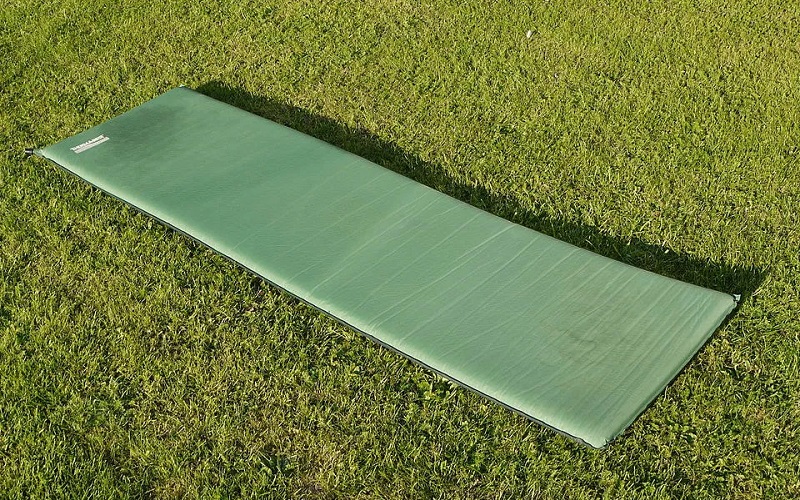
If you were just going camping, then you’d be able to focus 100% of your gear and carry weight for camping essentials.
The thing is, camping out is just part of the hunt, and it’s not your primary focus. Most of your gear should be dedicated to hunting, and as such, you need to pack lightly for your camping gear.
Sleeping pads or ultralight sleeping bags might not be the most comfortable thing out there, but they will protect your back from being rigid and stressed against the cold, hard ground in the middle of the night.
Sleeping pads can weigh as little as 0.7 lbs and up to about 2 lbs with more cushioning and comfort in mind. Inflatable models are great to add a bit of extra bounce without upping the weight but don’t bother packing a pump or compressor. You should just inflate it the old-fashioned way.
Tent
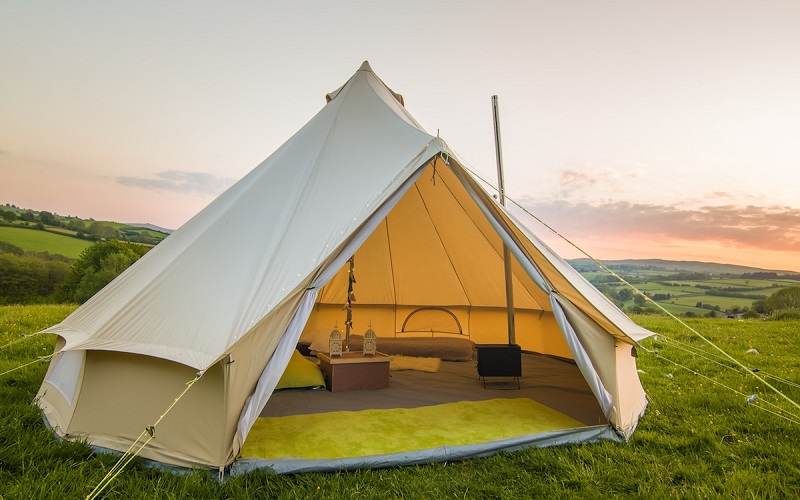
Just like with sleeping pads, the goal here is to pack ultralight so you have plenty of room for your hunting gear. Ultralight tents can come with ample waterproofing, additional tarps, seam-tapered designs, and bucket-style flooring and still weigh under 2 lbs in total (including fiberglass poles).
If you’re going hunting with a friend, they will need their own tent—the tents we’ve just described are designed for one person and their gear, and there’s not much room for anything else.
You know what that means? Minimal size means minimal time spent setting it up and taking it down, keeping your time optimized for tracking and hunting.
Portable Toilet With Essentials
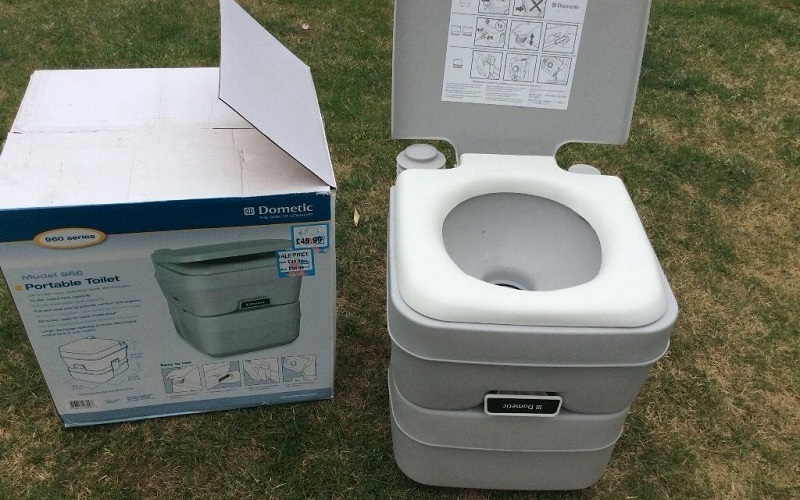
Portable camping toilets are the last thing that anyone wants to bring along, but if you’re setting up camp before you head out and hunt, it’s worth lugging them along from the truck to the campsite. A two-day trip requires one of these and all the essentials that come with it.
The thing is, you have to be super careful about how you dispose of waste. Most of the time, it’s wise to just get a portable toilet with a small flush basin in it and keep it in the bed of your truck (perhaps in a large plastic bag with a seal on it) until you get home.
You can’t just dump human waste in the woods. You need to be at least two hundred steps away from a water source, and you have to dig a hole that’s around eight inches deep to bury the waste.
It’s an egregious process, so most hunters will just bring their toilet along, haul it back with them when the trip is over, and dispose of it normally in their homes.
Camping Stove
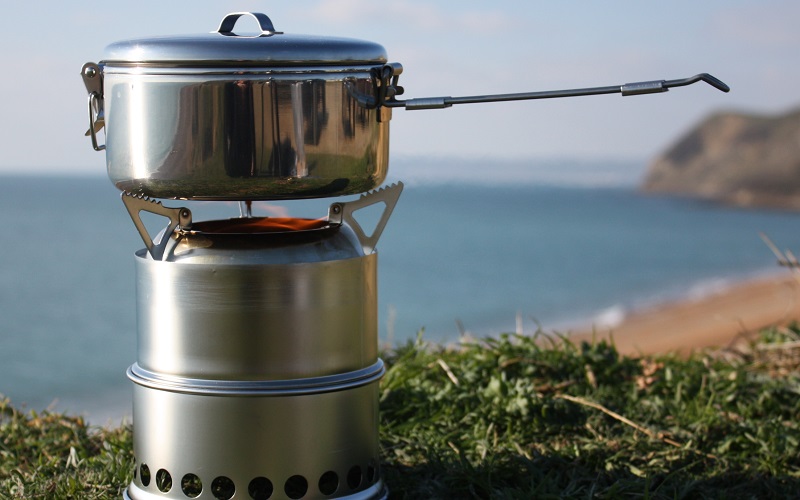
If you’re setting up shop to camp for a few nights and hunt during the day, then you need some way to clean your game and cook some of it to keep your strength up.
Now, you can fish in the mornings and use that as food if you’d like, but there’s something satisfying about cooking and eating the game that you’ve just hunted.
Camping stoves usually run off of butane and are much more reliable than an open flame at reaching the necessary internal temperatures for meat to be deemed safe.
You should bring a food thermometer with you just to be sure. Keep in mind that some game is harder to cook thoroughly than others, so you’d do best to learn how to prepare whatever you’re hunting before you hit the trail.
Related Questions
Is All Hunting Gear Waterproof?
You’d think it would be standard practice, but no, you should never assume that hunting gear is waterproof. Most jackets, boots, pants, and hats will come with a small level of water resistance, which is vastly different from waterproof.
Waterproofing means that when the item is exposed to a lot of water (usually by submersion), it won’t absorb any of that moisture. It stays completely dry and beads up the remaining water on the outside, and you can just wipe it off or shake it loose.
However, water-resistant items simply do the latter: they bead up water and let it roll off the item, but they’re not designed to be submerged. Even heavy rainfall could be enough to penetrate the fibers of your hunting gear, which is why it’s important to opt for the highest waterproof rating possible.
The better the waterproofing, the more likely it is to be mildew and mould-resistant. Since you’re stowing your hunting gear away for 2-4 weeks at a time when it’s not in use, and it’s usually put in a closet or a trunk, it’s the perfect environment for mildew to form and eat away at the fabric of your clothing. The more waterproof something is, the more resistant it will be to these problems.
Do I Need Waterproof Hunting Gear?
You can’t tell what’s going to happen out there. When you read the forecast in the morning, it’s centered around metropolitan or inhabited areas, so the weather that’s happening thirty miles away from the county line might be vastly different. Making sure that your gear is waterproof is just good practice for expecting the unexpected, and as a hunter, there are going to be a lot of unexpected things you’re about to see.
How Do I Maintain My Hunting Gear?
First and foremost, dry everything off when you’re done with it. I don’t just mean let it hang on a line; I mean bring a paper towel through the pockets, the inner lining of the zipper, the interior pockets, the collar, the hemline, everything. Moisture gets trapped in areas that we don’t expect, and as we mentioned before, unchecked moisture is a death sentence for your hunting gear.
So keeping it dry before storing it is key, but there’s something else you can do to prolong the lifespan of your hunting gear. You don’t just purchase this gear; you invest in it. As such, you want to protect your investments, so you should bring along a pocket repair kit with you when you head out on a hunting trip.
This allows you to patch up simple tears from snagging on tree branches, cuts from a slip-up while using your hunting knife, and anything else you can think of. Is it a permanent solution? No, not by a long shot, but it does buy you time until the end of your trip so that your hunting gear doesn’t degrade further.
You should still get your clothing, equipment, and essentials repaired by a professional when appropriate, but you can’t just retire them in the middle of a trip. You brought it with you for a reason, so patch it up, get some use out of it, and tend to it when you get home.
Fully Kitted And Loaded For Bear
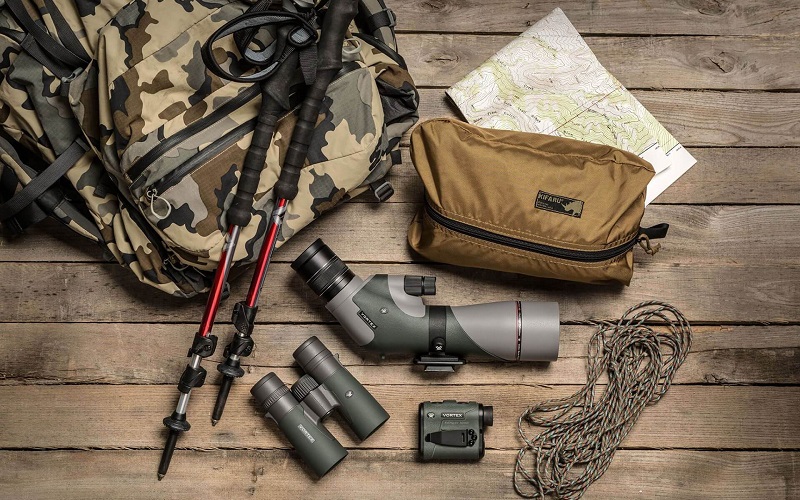
If you’re not immediately pumped up right now, then I don’t know what to tell you. You know everything that you’re going to need, so it’s time to go shopping and get to it.
You need to be prepared when hunting season rolls around. If it’s already here, then you’re missing out on one of the greatest opportunities of your life.
Grab your canine companion, stock up, and find your way through the underbrush of Mother Nature in your effort to live off of what the land has given you.
Resources:

